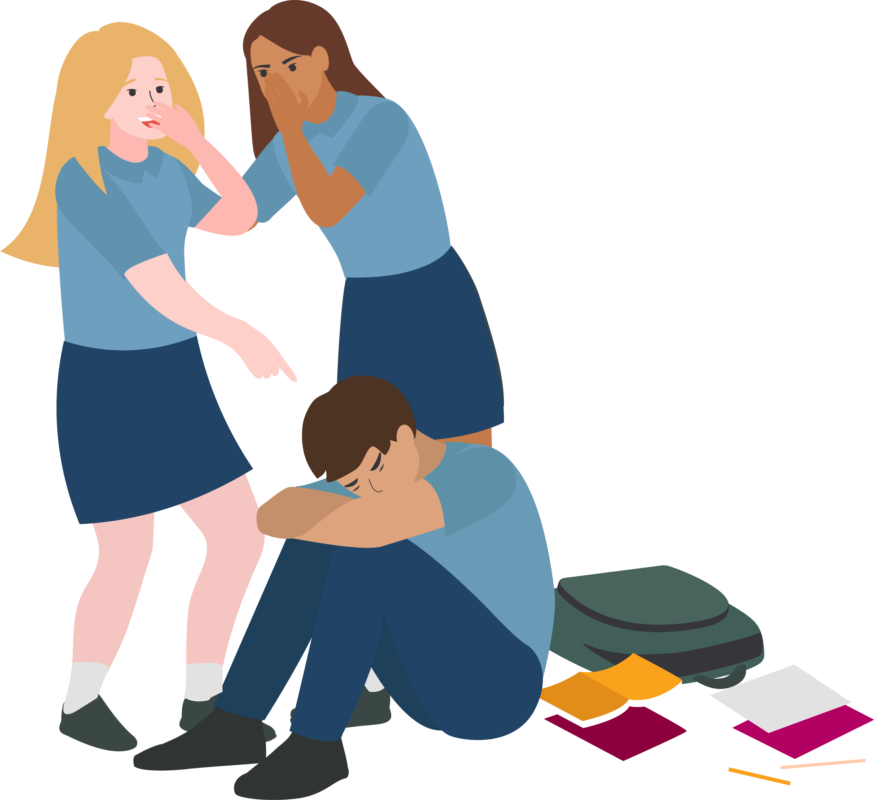Bullying and friendship issues affect millions of lives each year. By law, all state and private schools must have a behaviour policy in place that includes measures to prevent all forms of bullying among pupils.
This policy is decided by the local authority for state schools, and all staff, pupils and parents must be told what it is. Schools must also act to prevent discrimination, harassment and victimisation within the school. The Government’s Preventing and tackling bullying guidance lays out school responsibilities clearly.
Spotting signs of bullying and friendship issues is the first challenge, especially as many victims do not feel comfortable reaching out. Recording and monitoring even the smallest signs can enable you to identify patterns and make prompt interventions. Below we’ve compiled some guidance to help you do this effectively.
What is bullying defined as?
Bullying and wider friendship issues can take many forms, including:
- Physical assault
- Teasing
- Making threats
- Name calling
- Exclusion / being ‘left out’
- Gossiping and rumours
- Cyberbullying – bullying via mobile phone or online (for example email, social networks and instant messenger).
While there is no one, legal definition of bullying, the Anti-Bullying Alliance (ABA) defines it as: the repetitive, intentional hurting of one person or group by another person or group, where the relationship involves an imbalance of power. It can happen face to face or online.
ABA also says: To ensure we are able to prevent bullying, act quickly when it takes place and avoid misidentifying bullying, it is vital that schools and other settings have a shared definition of bullying. This should be understood by the whole school or setting including parents, young people and all staff.
Spotting signs of bullying and friendship issues
The signs that bullying or friendship issues are taking place are not always obvious and can vary on a case-by-case basis. This can make prompt interventions difficult. It’s why it’s important to record any concerns or changes in a student’s behaviour, no matter how small they might seem, so you can begin to build a more detailed picture.
Here are some signs to look out for in pupils:
- Being withdrawn or disengaged in the classroom
- A decrease in attendance
- Changes in behaviour such as being angrier or demonstrating anxiety that wasn’t previously shown
- Physical signs such as cuts or bruises, or complaining of headaches
- Suddenly not doing as well with schoolwork
- Belongings getting lost or damaged with no explanation
How can schools tackle bullying?
Preventing and tackling bullying in schools requires a well thought out approach, with clear procedures for dealing with incidents of bullying. Here are just some things to consider:
- Identify an anti-bullying lead – a designated member of staff within school that people can go and speak to for guidance and advice on bullying-related issues.
- Set up a peer mentor programme – train older students in your school to become ‘buddies’ or ‘playground pals’, providing support and someone to talk to nearer other pupils’ own age.
- Create a culture of ‘telling’ – cultivate a school culture that encourages everyone to ‘tell’ if an incident of bullying has occurred. The theme of this year’s Anti-Bullying Week is ‘Reach Out’ and calls for everyone – whether being bullying themselves or aware that someone is being bullying – to reach out and show the support needed.
- Educate pupils – run regular workshops to ensure all pupils know what constitutes bullying and how important it is to tell people about it and make sure it’s reported.
- Keep a record – the most important thing you can do is keep a record of any and all bullying incidents no matter how big or small. You can find our top 3 tips for this below.
3 tips for recording and monitoring bullying
Recording bullying incidents accurately and efficiently is an important part of any school safeguarding policy. In fact, the Government’s Preventing and tackling bullying guidance states that staff should develop a consistent approach to monitoring bullying incidents in their school and evaluating whether this approach is effective.
Logging even the smallest concerns about a student’s wellbeing or safety will enable you to spot patterns quickly and make prompt interventions to keep young people safe. Having a clear and accurate record also means you can evidence actions to school governors and Ofsted.
These are our top 3 tips for recording and monitoring bullying and friendship issues:
- Consistency is key – ensure you have a consistent way of recording concerns within your school, which all staff understand. This includes ensuring staff know what kind of things need to be recorded and where. Consider regular training on spotting the signs of bullying and friendship issues, as well as your processes for recording and monitoring concerns.
- Record as much detail as possible – when it comes to incidents of bullying, no sign is too small and no detail insignificant. Consider things such as the students involved as well as staff and other adults, when or where the incident has taken place, the type of bullying experience, the impact of the incident and actions taken at an individual and organisation level.
- Keep records safe and accessible – your records should be safe and accessible. Some schools use older paper systems, but wherever possible, go digital. This will keep everything secure in one place, as well as enabling you to spot trends and patterns much more easily.
CPOMS allows you to log and monitor all concerns around a student’s safety and wellbeing, enabling you to build a chronology as well as start to develop school-wide patterns. Other benefits include the ability to alert staff to information they need to know quickly, as well as building and storing custom reports.
Get in touch with a member of our team today to find out more.




